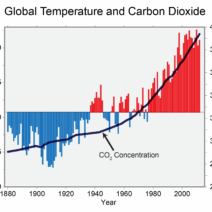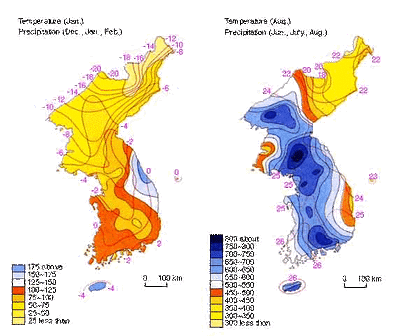As the planet grapples with unprecedented environmental crises, many people ponder the role of emerging technologies in combating climate change. Could hydrogen fuel cells, combined with artificial intelligence (AI), emerge as powerful allies in this ongoing battle? This playful question invites exploration into the synergistic potential of these two innovative fields.
Hydrogen fuel cells are gaining traction as a clean energy source, capable of transforming hydrogen into electricity, with water as the only by-product. This process has the potential to revolutionize various sectors, from transportation to industrial applications. The pivotal question remains: how can we effectively harness this technology to mitigate climate change? Moreover, the incorporation of AI may yield unprecedented efficiencies, maximizing the impact of hydrogen fuel cells.
One of the most significant advantages of hydrogen fuel cells is their versatility. They can be employed in vehicles, stationary power systems, and portable devices. When integrated into the transportation sector, particularly in heavy-duty vehicles, hydrogen can serve as a sustainable alternative to fossil fuels. This potential reduction in greenhouse gas emissions poses a tantalizing opportunity for cities struggling with air pollution and carbon footprints.
But can AI enhance the efficiency of hydrogen production and fuel cell utilization? The answer is an emphatic yes. AI technologies, such as machine learning algorithms and predictive analytics, can optimize hydrogen production processes. For instance, methods like electrolysis—which splits water into hydrogen and oxygen—can be refined through AI-powered simulations that analyze energy inputs and outputs. By forecasting energy demand and dynamically adjusting production levels, energy systems can achieve significant reductions in overall costs and emissions.
Additionally, AI can enhance the operational management of hydrogen fuel cells. Real-time data analysis can identify inefficiencies or malfunctions, enabling timely interventions before issues escalate into costly failures. Advanced analytics can facilitate predictive maintenance, thereby optimizing the lifespan and performance of fuel cell systems. This pragmatic synergy not only maximizes the efficiency of hydrogen fuel cells but can also indirectly lower the carbon emissions associated with manufacturing and installation processes.
However, challenges loom over the integration of these technologies. The creation of a hydrogen infrastructure demands significant investments in research, development, and implementation. The vast networks required for hydrogen production, storage, and distribution present technical hurdles that must be overcome. Moreover, the current reliance on natural gas for hydrogen production—through processes such as steam methane reforming—still emits carbon dioxide, albeit less than traditional fossil fuels. The transition towards greener hydrogen production methods, such as water electrolysis using renewable energy, remains essential.
In this dialogue of possibilities, questions emerge about the role of policy and regulation. Strategic governmental support can catalyze advancements in hydrogen technologies and AI integration. Subsidies, tax incentives, or dedicated funding initiatives can bolster research and innovation. However, the political landscape often complicates these aspirations, as competing interests and priorities vie for attention. Can proactive policies pave the way for a thriving hydrogen economy, while simultaneously harnessing AI to drive efficiency?
Public perception is another crucial element in this equation. While awareness of climate change grows, misconceptions about hydrogen fuel cells—ranging from safety concerns to cost-effectiveness—may hinder broader acceptance. Education and outreach initiatives can play a vital role in demystifying these technologies. Engaging stakeholders through informative campaigns that illustrate the benefits and safety of hydrogen applications may foster more significant public support. After all, a well-informed populace could advocate for the necessary systemic changes to realize a clean energy future.
Moreover, as hydrogen technologies evolve, there is the potential to democratize energy production. Decentralized models could empower communities, providing local entities with the means to generate and utilize hydrogen as a fuel source. This shift away from centralized fossil fuel systems has the added benefit of fostering energy independence, reducing reliance on volatile global markets, and thus enhancing energy security.
Despite the promise of hydrogen fuel cells and AI, skepticism remains as to whether these technologies can deliver on their ambitious promises. Their implementation will require substantial collaboration across disciplines—scientists, engineers, policymakers, and the public will all have to work in concert. The convergence of these groups can enhance innovation and efficacy while navigating the inherent challenges faced in climate action.
The question lingers: can hydrogen fuel cells and AI fight climate change together? While the evidence suggests a potent interplay between the two, the outcome will hinge on careful strategizing, robust investment, proactive policies, and the willingness of society to adopt transformative changes. In the face of a deteriorating climate, this urgent endeavor may hold the key to a sustainable future, paving the way towards a greener and more resilient world.
As we delve deeper into the possibilities that lie ahead, the intersection of technological advancement and environmental stewardship presents an exhilarating frontier. It is here, amid innovation and necessity, that humanity will redefine its relationship with energy consumption, striving towards a harmonious existence within the boundaries of our planet. If successfully executed, the combination of hydrogen fuel cells and AI could bolster efforts against climate change, illuminating the path toward a sustainable tomorrow.







